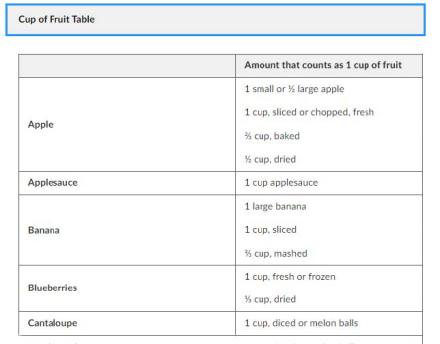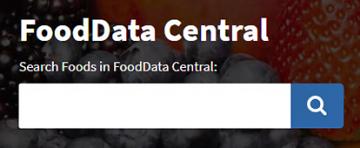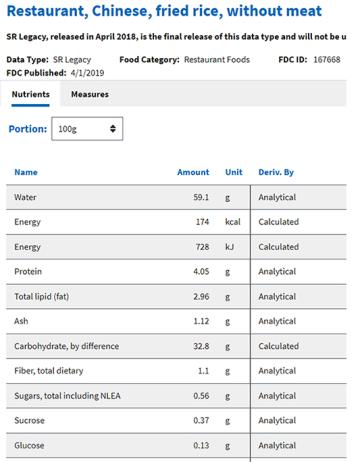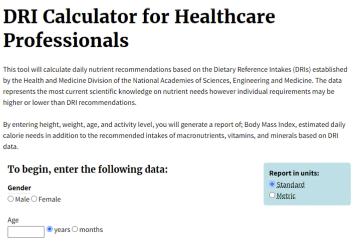Take the Vitamin - Mineral Challenge
Our bodies are machines that require vitamins and minerals to function and stay healthy throughout our lifetime. Each nutrient plays a critical role in our healthy wellbeing, such as iron for growth and development, potassium for proper function of muscles and nerves, Vitamin A for immune response and organ health, and Vitamin D for bone growth.
It's important to eat a variety of fruits, vegetables, grains, protein, and dairy (or dairy substitute) foods to ensure your body is getting the right amount of vitamins and minerals. USDA has identified calcium, potassium, dietary fiber, and Vitamin D as dietary components that the general public does not get enough of.
 About the Experiment
About the Experiment
How do you know if you are getting enough vitamins and minerals? To find out, take the Vitamin-Mineral challenge! It's easy, it can be life changing, and you'll probably be surprised at the results.
 |
Details
|
 |
|
 |
|
 What You'll Need
What You'll Need
- Laptop or smartphone with internet service
- Pencil and paper or a logsheet (see appendix A)
- Calculator
 Let's Do This!
Let's Do This!

For 3 days, keep track of what you eat and drink for breakfast, lunch, dinner, dessert, and snacks.
- Log your food intake either using a nutrition data app or on the logsheets provided in this challenge, and try to be as specific as possible, including the brand name of the food (ex: Life cereal) or specific type of fruit, vegetable, or protein (ex: Gala apple).
- Try to also include the quantity that you eat, using the serving size on the packaging as a guide. For fruits, log onto https://www.myplate.gov/eat-healthy/fruits and check out the fruit table on the page.
- Same for vegetables, proteins, and grains.
Option 1: Using FoodData Central and the Logsheets

Once your food types and quantity are logged onto your sheet, use the nutritional label on the food containers to determine the nutritional content of each food item eaten. For grains, fruits, vegetables, proteins, and other items without a nutritional label, visit USDA's FoodData Central at https://fdc.nal.usda. gov/index.html
In the search bar, type in the food item and try to be specific at first. If the search results do not align with what you ate, be a little more general.

On the results page you will see several options: Most items, including fruits, vegetables, and proteins, are typically found under "SR Legacy Foods" or "Branded Foods". Choose the selection that fits best.

Now it's time to do a little math. Use the portion dropdown to best align with the amount of that particular food that you ate. For example, if you ate 200 grams of a corn muffin, and the portion dropdown is set at 100 grams, you'll want to double the nutritional content when logging it down on your spreadsheet. If you ate a quarter of the portion, then divide the nutritional content by 25 (percent).
Read through the nutritional content (either from the food container or FoodData Central) and log the amount of the following:
- Calcium
- Iron
- Potassium
- Vitamin A (mg)*
- Vitamin C (mg)
- Vitamin D (mg)*
- Vitamin E (mg)
- Zinc
- * If you are using the FoodData Central search, use the RAE UG metric for Vitamin A and the D2+D3 UG metric for Vitamin D.
For a list of health benefits for each vitamin and mineral above, click here. Remember to log these amounts based on the portions you ate. If you cannot find exactly what you ate, try to get as close as you can.
Option 2: Using A Nutrition Data App
There are many Apps on the market that can calculate and log your daily food intake. When choosing an App, make sure it contains a large inventory of foods and can determine and log portion size. For each food item, you will want to enter the food item and portion consumed. If you cannot find an App to accomplish this, use the FoodData Central method (Option 1).
Read through the nutritional content (either from the food container or FoodData Central) and log the amount of the items below.
- Calcium
- Iron
- Potassium
- Vitamin A (mg)*
- Vitamin C (mg)
- Vitamin D (mg)*
- Vitamin E (mg)
- Zinc
- * If you are using the FoodData Central search, use the RAE UG metric for Vitamin A and the D2+D3 UG metric for Vitamin D.
Remember to log these amounts based on the portions you ate.
Are You Getting Enough Vitamins and Minerals?

Now that your chart is complete, let's see how it compares to USDA's recommended nutrient consumption. Log onto USDA's Interactive DRI Tool for Health Professionals. Fill out the required data about yourself and click Submit.
Scroll down to view the recommended intake per day for the 8 vitamins and minerals you tracked. Compare with your logsheet (or on your App) and notate which items you met the recommended guidelines and which you did not.
What Did You Learn?
- Observe your logsheets, paying particular attention to where you met and did not meet your recommended guidelines.
- Which foods are rich in vitamins and minerals?
- Which foods lack the vitamins and minerals you need?
- In what areas did you meet the recommendations?
- Which vitamins and minerals do you need more of, and which foods can help you reach your goals?
- After taking this challenge, should you alter your daily/weekly food intake, and if so, what food changes should you make?
- What are your big takeaways from this challenge?
Resources
For more information on eating healthy, making a plan and exploring MyPlate, visit https://www.myplate.gov.



